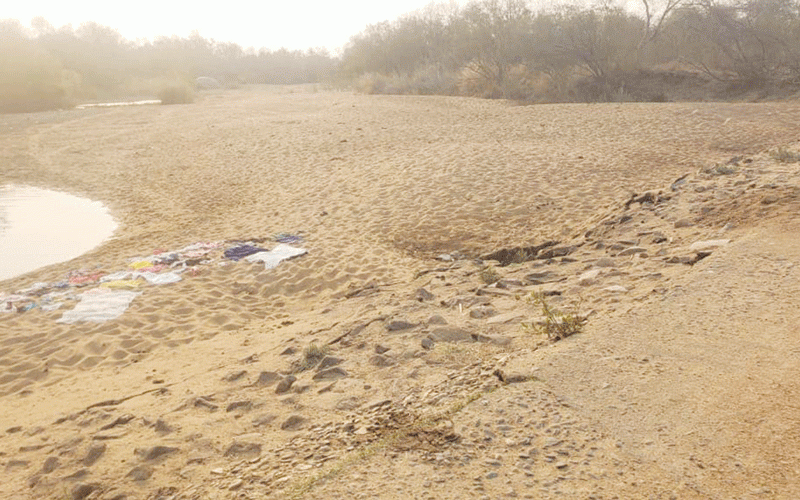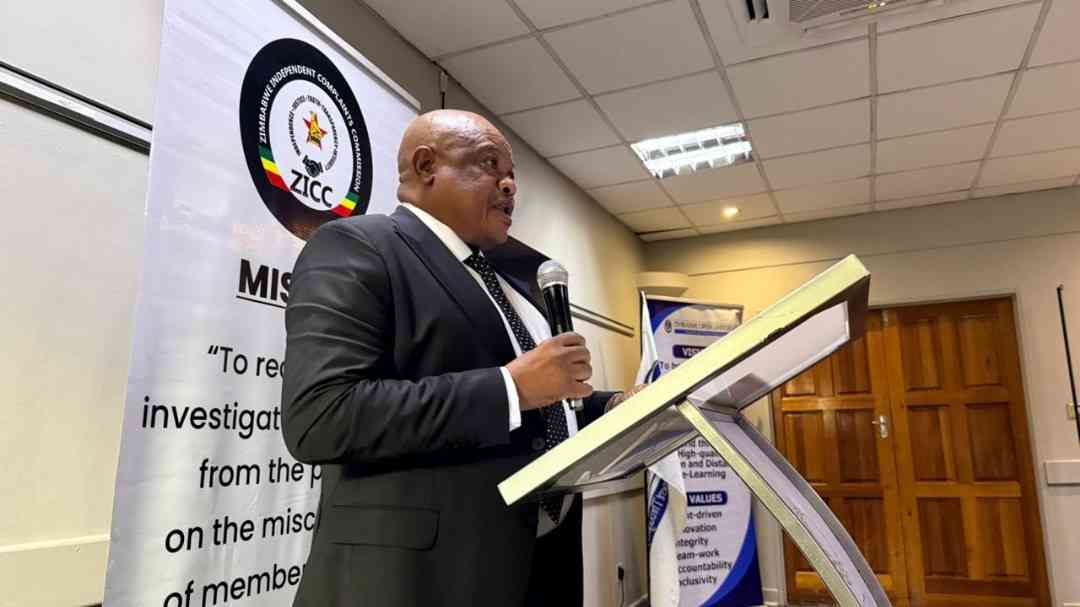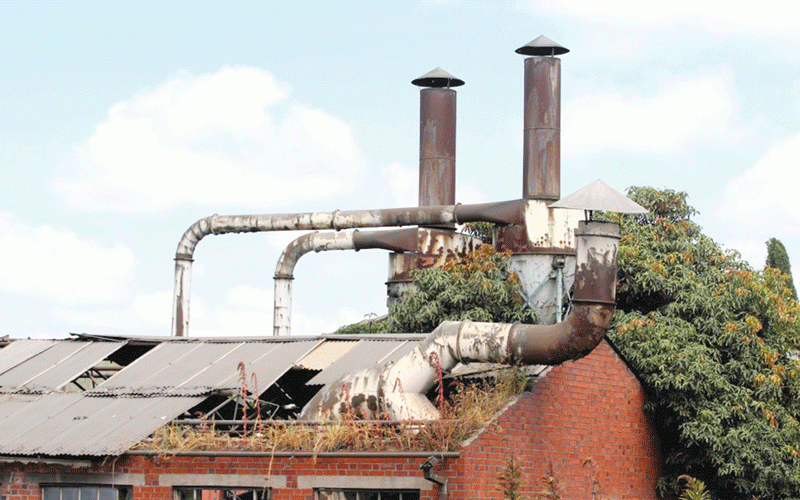
AT dawn, the Munyati River should shimmer across Zimbabwe’s dry Midlands, a lifeline threading through the scorched plains.
Instead, there is silence.
The riverbed is now a cracked scar of dust and sand. The sound of running water, once the pulse of the community, is gone.
“This river raised us,” said Tafadzwa Moyo, a wiry farmer who has lived along its banks for half a century. “Now it’s gone, stolen from us by the Chinese.”
The “Chinese” Moyo refers to is Dinson Iron and Steel Company (Dinson), part of the Tsingshan Group, the world’s largest stainless-steel producer and one of Zimbabwe’s most powerful foreign investors.
Since Dinson built a dam upstream to feed its US$1,5 billion Manhize steel plant, the Munyati River has stopped flowing downstream.
For thousands of villagers in the Msena Range, life has collapsed. Cattle that once drank freely now fall from thirst.
Crops that depended on the river’s waters have withered. Children trek for kilometres to find muddy puddles.
- Africa’s ‘largest’ ferrochrome plant takes shape
- Africa’s ‘largest’ ferrochrome plant takes shape
- Zim’s quest for FDI leaving communities exposed
- Anxiety and anguish as Chivhu villagers make way for billion dollar Chinese project
Keep Reading
“We wake up to dust. Our cattle are dying. The company has taken all the water and left us with nothing,” Moyo said, his voice breaking.
Locals remember the moment clearly.
It was mid-2023, when the final dam walls rose across the upper Munyati. The river’s flow slowed, then trickled, then vanished.
Locals remember the moment clearly. It was mid-2023, as the final dam walls rose across the upper Munyati. The river’s flow slowed, then trickled, before vanishing entirely.
“It used to flow even through droughts,” said a local herdman, who did not want to be named.
“Now you can walk across it in your shoes. Even the frogs have left.”
Images seen by the Zimbabwe Independent confirm the villagers’ claims. The once-brown ribbon of water is now a pale band of dust. Vegetation that once lined its course has turned brown. Local wells that were fed by the river have dried up.
“Everything depended on that water,” said Martha Zunde, a widow who has lost five of her 10 cattle to dehydration.
“We were promised development, but we have been left with death.”
In written responses to the Independent, Dinson insisted it had not blocked the river, stating that it “occasionally opens a valve” to release water for villagers and livestock downstream.
“Regarding the concerns raised by A1 farmers in the Msena Range about water supply from the Munyati River, I would like to clarify that Dinson has not constructed a dam on the river,” Wilfred Motsi, the plant projects manager, said.
“It’s a weir with water outlets underneath.
He claimed the company only draws water for its operations and occasionally opens a valve to release water for villagers and livestock downstream.
“Instead, we draw water from the river as part of our operations. It is possible that the water shortage may be attributed to various factors, including low rainfall in the catchment area during the last rainfall period,” Motsi said.
“We understand the importance of water for local communities and agriculture, and we are willing to engage in discussions to better understand the situation and explore ways to mitigate any potential impacts.
“Over and above, there is an outlet, which occasionally is opened for downstream users, a position we agreed with the community, no one is denied water by Dinson.”
Villagers scoff at that explanation.
“We have never seen any water released,” said one farmer who identified himself as Muchengeti.
“Maybe they open it for five minutes for the cameras. The river stays dead.”
Many blame the government for siding with investors.
“Our government has sold us out,” Muchengeti added. “They bow to investors while we die of thirst.”
Dinson’s Manhize project enjoys strong political backing. President Emmerson Mnangagwa has hailed it as a “milestone of industrial rebirth”, the crown jewel of his Open for Business drive.
But in Msena, that industrial rebirth feels like a death sentence.
What is unfolding here mirrors a continental struggle: industrial expansion draining rivers, displacing the rural poor and rewriting ecosystems in the name of progress.
A 2024 African Centre for Energy Policy study found 63 major Chinese-funded projects across Africa that have altered river systems or reduced downstream flow, most operating under private, opaque deals with limited oversight.
In Msena, the consequences are visible in every dry furrow. Gardens that once fed markets are barren.
Brickmakers have abandoned their riverbank kilns. Women dig holes in the sand to scoop muddy trickles of groundwater.
As desperation mounts, villagers are mobilising. A petition to the Chirumanzu Rural District Council is being prepared, demanding that Dinson restore the river’s flow and provide boreholes.
If nothing changes, some young men vow to march to the dam themselves.
Local chiefs are urging calm, fearing clashes with police or company security, but patience is wearing thin.
“They dammed our river,” Kenneth Chakurangei, a young farmer, said, staring at the barren riverbed. “But what they really dammed was our future.”
At sunset, villagers gather at what used to be the river’s edge. The air smells of dust and despair.
“This place used to sing with frogs,” Chakurangei said softly. “Now even the birds have gone.”
The Munyati’s silence reflects Zimbabwe’s painful trade-off between foreign investment and ecological survival.
As night falls, the orange glow of Dinson’s furnaces flickers on the horizon, powered by the same water that once sustained these villages.
“They call it development,” Chakurangei said quietly. “But what kind of development leaves the people without water?”
Since 2018, the Environmental Management Agency has approved over a dozen water-intensive Chinese projects, many fast-tracked without full environmental checks.
“What’s happening in Msena is part of a broader pattern of state-enabled extraction,” said an angry A1 farmer who refused to be named.
“Foreign capital is prioritised over citizens’ rights and the price is paid in water, forests and lost livelihoods.”
China is now Zimbabwe’s largest investor, funding coal plants, lithium mines and steelworks in exchange for mineral access.
Yet for the communities that host these projects, the promise of prosperity has evaporated like the Munyati itself.
A Zimbabwe Environmental Law Association report found that 70% of Chinese-run projects violate environmental regulations, mostly for taking water without licences or causing pollution.
For the people of Msena, the Munyati River was more than water, it was memory, culture and hope.
Now, it stands as a symbol of what Zimbabwe risks losing in the pursuit of investment: its natural soul.
As the last light fades over the dry riverbed, one question lingers in the dusty air: What good is development if it leaves a nation’s people, and rivers, dry?











